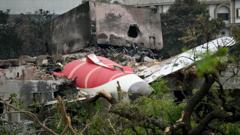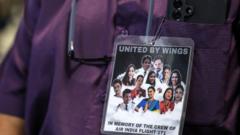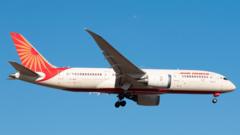Despite the increasing volume of air travel, India’s airlines are grappling with safety issues, including recent crashes and technical faults. The aviation regulator maintains that the country's air safety record is strong, but growing concerns persist following high-profile incidents.
Rising Aviation Concerns in India: Is Air Travel Really Safe?

Rising Aviation Concerns in India: Is Air Travel Really Safe?
India's air traffic has surged, but recent accidents and technical issues raise questions about the safety of its skies.
India's passenger air traffic has skyrocketed more than twofold since the 2014-15 period, leading many to question the safety of its skies, particularly after a tragic Air India crash in June, which claimed at least 270 lives shortly after takeoff from Ahmedabad. Faiz Ahmed Kidwai, head of the Directorate General of Civil Aviation (DGCA), asserts that historically and currently, India's aviation safety has been robust. He points to international safety metrics from the International Civil Aviation Organization (ICAO), which reveal that India often exceeds global safety averages.
However, significant accidents remain a concern. The June crash marked the third major incident in 15 years, prompting urgent discussions about air safety in the country. Alongside this, incidents of turbulence, maintenance oversights, and inadequate training have resurfaced, further fueling public anxiety.
The latest concerns involved SpiceJet, India’s fourth-largest low-cost airline, which faced scrutiny following revelations of premature propeller failures on its aircraft. An investigation unveiled a trend of management negligence regarding manufacturer regulations, leading to direct engagement with the DGCA. Actions were taken against responsible management personnel, ensuring corrective measures were implemented.
Further complicating matters, Air India's budget airline encountered criticism for delaying essential engine component replacements and for filing false compliance records. Each airline incident highlights ongoing regulatory challenges in a burgeoning aviation sector that reported nearly 2,500 technical faults since 2020, with IndiGo accounting for over half of these.
The DGCA is actively revising safety protocols, especially for navigating turbulent weather, mandating detailed preemptive actions for pilots to enhance safety. Recent data indicates a culture shift towards increased reporting of technical issues, a development Kidwai acknowledges as a positive step, highlighting its importance in maintaining operational standards.
The rise in demand for air travel, however, has placed additional strain on the DGCA, which has seen budget cuts affecting its oversight capabilities. With operational aircraft nearly doubling over the past decade, India is now the third-largest aviation market globally, projected to expand further. Observations from Kidwai suggest that while traffic saw minor fluctuations following notable accidents, the public's confidence in air travel is expected to gradually return as assurance measures take effect.
As India’s aviation landscape evolves, the pressing question remains: How safe are its skies? The DGCA insists on rigorous oversight to prevent lapses, maintaining that with vigilant regulatory practices, the air travel experience can remain both safe and reliable for millions of passengers.




















